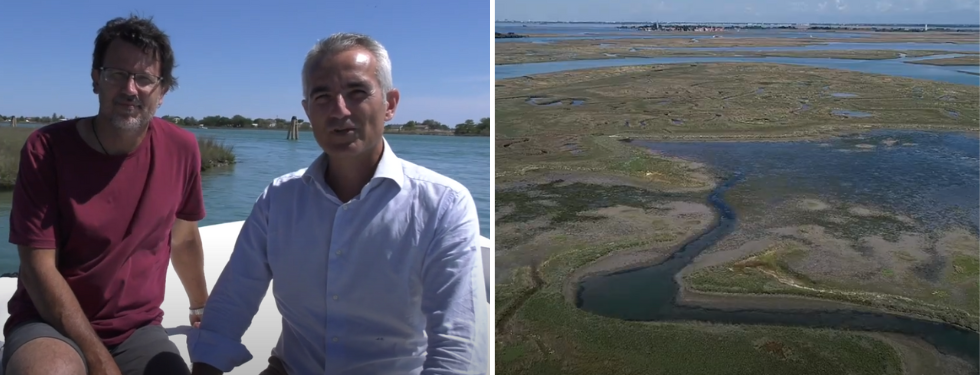Venice Lagoon: a miniseries to find out this unique environment

The Venice Lagoon is the largest wetland in the Mediterranean and it has a very important ecological and naturalistic value. Its evolution has always been the result of the interaction between natural processes and anthropogenic interventions and today it has to bear the brunt of further pressures, linked to the effects of climate change.
A multidisciplinary team from the University of Padua has been involved for three years in the study of the Lagoon environmental conditions with particular attention to the salt marshes, the most characteristic morphological structures of the area, which are extraordinarily efficient at sequestering carbon dioxide and storing it in the soil as organic carbon.
In order to survive, the salt marshes must grow vertically with a rate that is at least equivalent the average sea level and recent studies have shown that 70% of the sedimentation is concentrated during high water events which, however, as is well known, can represent a strong risk for Venice and for the inhabited centers. A system of moveable walls, called MOSE, started working in October 2020 and it is essential to save Venice from flooding, but it has been becoming clear t that a repeated lifting of the gates can have serious consequences on the entire ecosystem.
The other morphological structures typical of the Lagina of Venice are the canals and the tidal flats and their study is also important in order to observe, describe and predict, through an integrated approach, the erosive and depositional processes that determine the evolution of the lagoon morphologies and ecosystems linked to them.
The Venice Lagoon is a precious environment but it is also fragile. For this reason, the Department of Geosciences of the University of Padov has produced a mini-series with the aim of deepening, episode after episode, all the particularities of this extraordinary ecosystem and understand what can be done to protect it in the best possible way.
A trip, led by Andrea D’Alpaos, Massimiliano Ghinassi and other experts who have long dedicated their research interests to the Venice Lagoon, to admire the fascinating lagoon landscape with more aware eyes, thinking about how to preserve its future.
1) Venice Lagoon. The morphology of the largest tidal basin in the Mediterranean
2) Venice Lagoon. The salt marshes and what they need to survive
3) Venice Lagoon. Ecosystem services provided by salt marshes
4) Venice Lagoon. Analyzing salt marsh soils in laboratory
5) Venice Lagoon: The salt marshes and their network of channels and meanders
6) Venice Lagoon: the tidal flats
7) Venice Lagoon: the strong erosive effects attributed to anthropogenic processes
and also on the Department's social channels.





